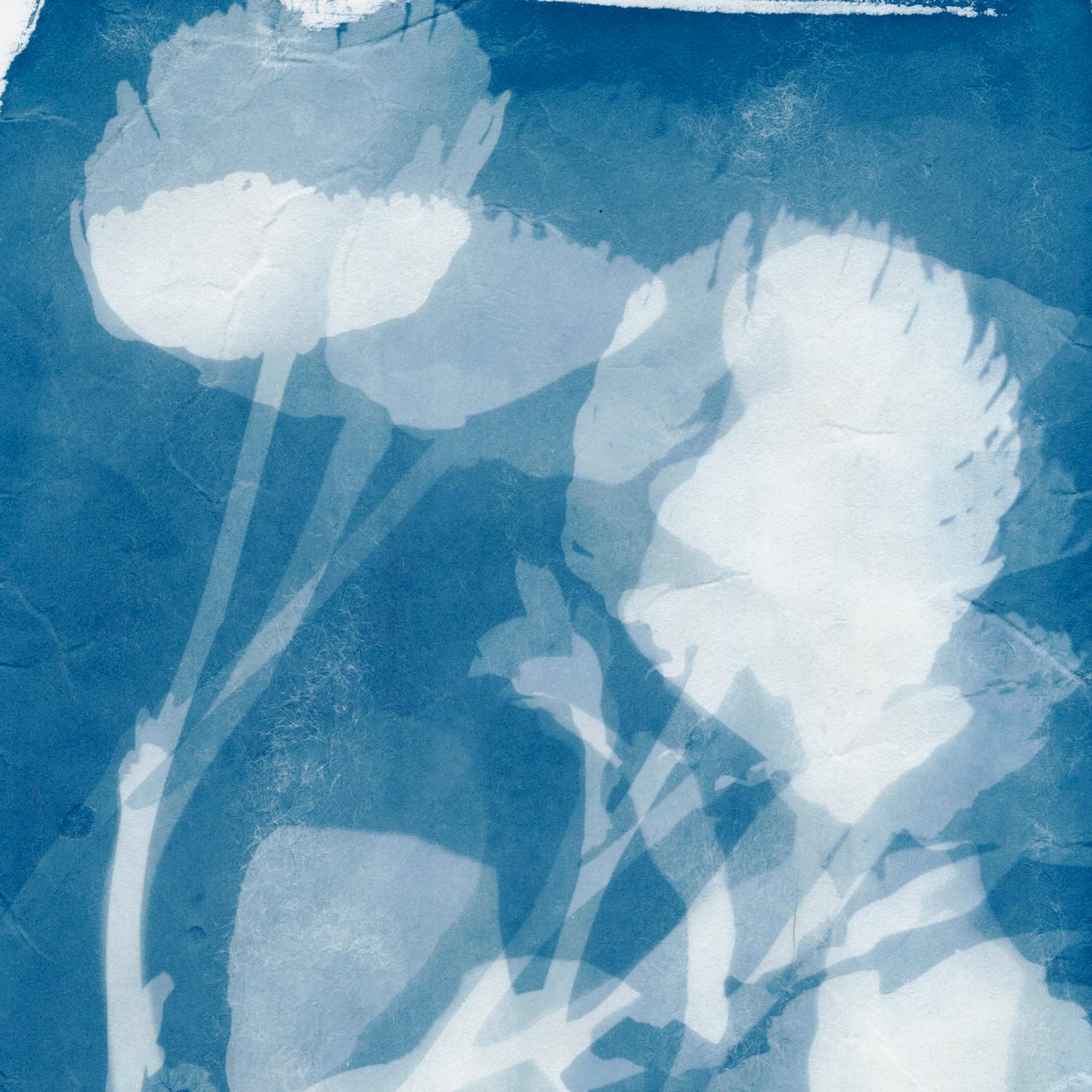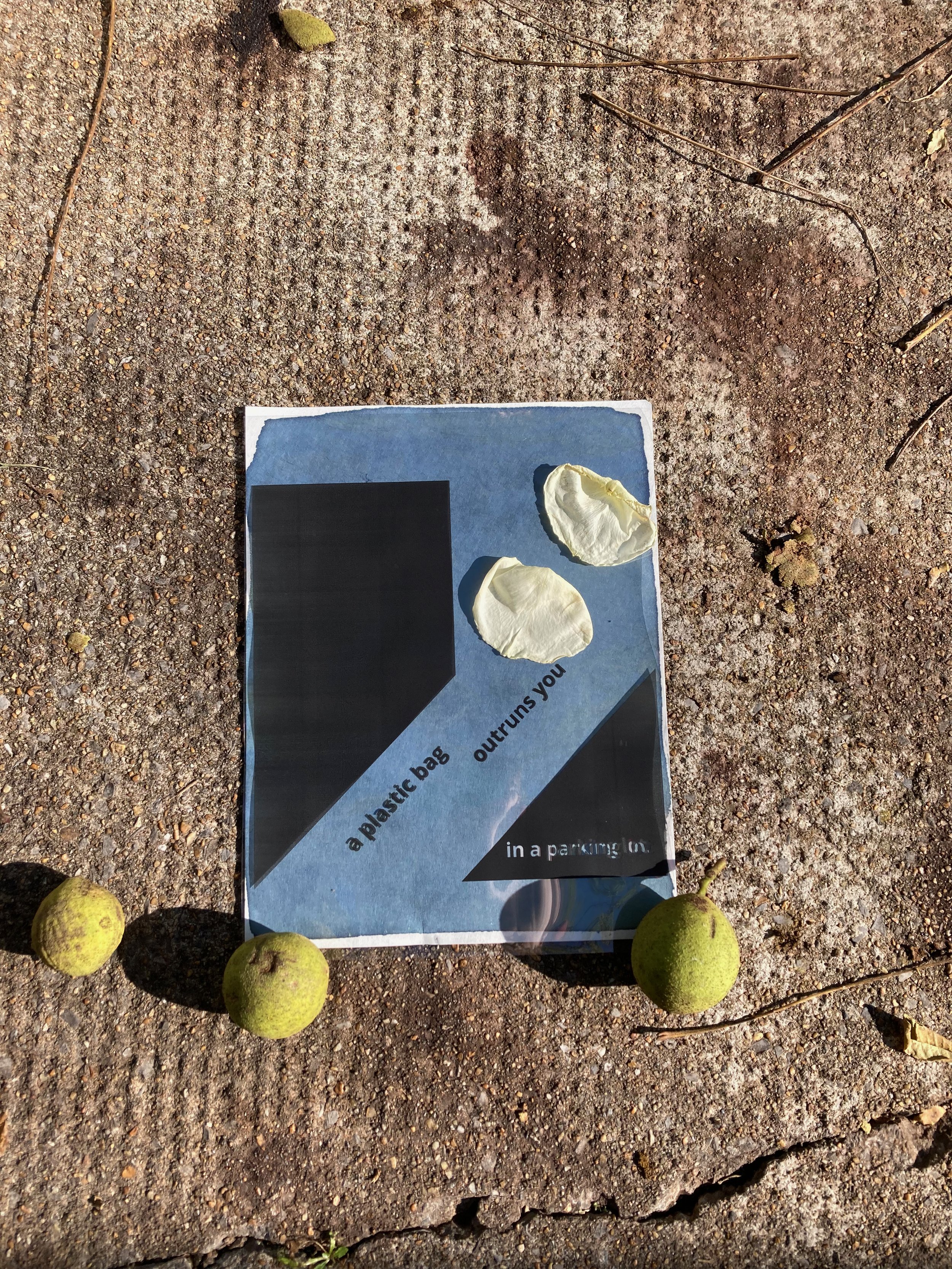
the cyanotype process
What’s a cyanotype?
It’s a solar print! This early photographic process (first developed in the 1840s) combines ferric ammonium oxalate and potassium ferricyanide to produce a UV-sensitive solution. After applying the solution to paper or cloth, you place the sensitized material out in the sun—covered with botanicals, household objects, or even printed negatives. Any part of the painted surface that is exposed to sunlight turns a deep cyan color; anything kept in shadow remains the white color of the substrate.
-

Gather materials.
A sunny porch is your studio. Gather whatever will make an interesting shadow. Botanicals. Snippets of text on laser-printed negatives. Weights to keep the pieces from blowing away.
-

Expose to sunlight.
The process is vary fast—with exposure times between 30 seconds and 8 minutes (depending on the weather). You can play with moving the overlain elements to produce multiple, layered exposures.
-

The finished print.
Wash in water and hang to dry. Voilà—the cyanotype emerges!
